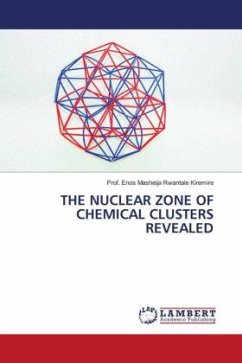The analysis of transition metal and main group element clusters revealed that they strictly obey the series S=14n +q and 4n+q respectively where q is a numerical variable and n is the number of skeletal elements in a cluster. When q 0, then the cluster is as a capped one. Due to the isolobal relationship between 14n+q and 4n +q series, it was decided that the 4n+q series be adopted for the categorization of all clusters from the main group and transition metal elements except when the calculation of cluster valence electrons is conducted. The evolution of the capping theory goes through the stage of using the discovered skeletal numbers and the genesis principle of clusters up to the finest level of calculating cluster valence electrons and the process of generating cluster formulas using the 12N capping theory. The capping theory is so precise in determining cluster valence electrons (CVE) and may be regarded as a natural law of chemical clusters.
Bitte wählen Sie Ihr Anliegen aus.
Rechnungen
Retourenschein anfordern
Bestellstatus
Storno








